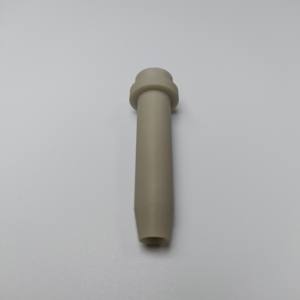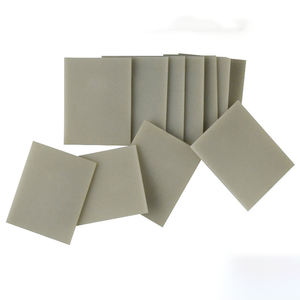Discover Premium Ceramic Products | Durability & Elegance United | Advanced Ceramics
PRODUCT PARAMETERS
Description
Overview of aluminum nitride ceramics
Aluminum Nitride Ceramic is an advanced ceramic material with aluminum nitride as the main component. It has been widely used in electronics, optics, and mechanics due to its unique properties.
Features of aluminum nitride ceramics
High thermal conductivity: Aluminum nitride ceramics have relatively high thermal conductivity, usually between 170-260 W/m·K, which makes it an excellent heat dissipation material. It is especially suitable for electronic devices that require efficient heat dissipation, such as substrate materials for power semiconductor devices.
Good electrical insulation: Despite its high thermal conductivity, aluminum nitride ceramics are excellent insulators of electricity, which can effectively prevent current leakage and ensure the safe operation of electronic components.
Low dielectric constant and dielectric loss: These characteristics make aluminum nitride ceramics very suitable for use in high-frequency circuits because it can reduce energy loss during signal transmission.
High temperature resistance: Aluminum nitride ceramics can maintain structural stability and strength at extremely high temperatures. Its melting point is about 2800°C, so it is suitable for applications in high temperature environments.
Low thermal expansion coefficient: Compared with semiconductor materials such as silicon, aluminum nitride has a lower thermal expansion coefficient, which means it has better dimensional stability when the temperature changes, which helps improve packaging reliability.
Corrosion resistance: Aluminum nitride ceramics have good chemical stability to most molten metals and are not easily oxidized or corroded, allowing them to perform well in harsh environments.
High mechanical strength: Although not as hard as some other types of ceramic materials, aluminum nitride ceramics still provide enough mechanical strength to allow them to be used in many structural applications.
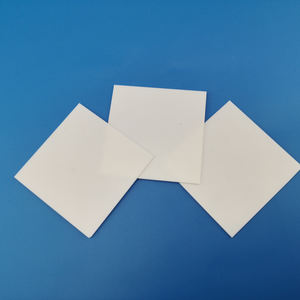
(TO-220 TO-247 170W/m.k Aln Aluminum Nitride Ceramic Board)
Specifications of TO-220 TO-247 170W/m.k Aln Aluminum Nitride Ceramic Board
The TO-220 and TO-247 170W/m · K AlN light weight aluminum nitride ceramic boards are designed for high-performance thermal administration in electronic devices. The material uses light weight aluminum nitride ceramic, understood for outstanding warmth dissipation. The thermal conductivity gets to 170W per meter-kelvin, making it perfect for applications requiring quick warm transfer. These boards take care of extreme temperature levels, running accurately from -50 ° C to 350 ° C. They suit power modules, LED lights, automotive systems, and semiconductor devices.
The boards provide solid electrical insulation, preventing existing leakage. This ensures safety and security and stability in high-voltage settings. Their low thermal growth matches products like silicon, minimizing anxiety during temperature modifications. This improves toughness and expands part life-span. The surface area is smooth and flat, guaranteeing limited bonding with heat sinks or substrates. This reduces thermal resistance for far better performance.
TO-220 and TO-247 versions accommodate different product packaging criteria. TO-220 fits compact styles, while TO-247 sustains greater power needs. Both are compatible with basic mounting procedures, streamlining integration. The ceramic material stands up to chemical deterioration and mechanical wear, doing well in severe problems.
Aluminum nitride outperforms traditional products like alumina or light weight aluminum. It moves warm faster than alumina, which usually offers 20-30W/ m · K. It also protects far better than metal-based services. This balance of insulation and conductivity makes it a top choice for modern electronics.
The boards are available in conventional densities, with custom dimensions readily available. They collaborate with soldering, epoxy bonding, or mechanical clamping. Accurate machining makes certain consistent quality and dimensional accuracy. Customers take advantage of decreased getting too hot dangers, making it possible for smaller, much more powerful gadgets.
These ceramic boards are widely made use of in commercial, automobile, and renewable energy sectors. They boost performance in inverters, electric motor drives, and RF amplifiers. Their reliability sustains constant procedure popular setups. By boosting heat dissipation, they aid avoid tool failing and preserve effectiveness.
No secondary processing is required, saving time and costs. The product is RoHS-compliant, meeting environmental standards. Producers trust it for essential applications where thermal control is essential. Its mix of high conductivity, insulation, and resilience addresses modern-day design difficulties.
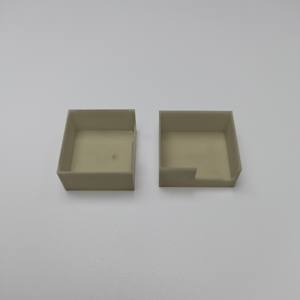
(TO-220 TO-247 170W/m.k Aln Aluminum Nitride Ceramic Board)
Applications of TO-220 TO-247 170W/m.k Aln Aluminum Nitride Ceramic Board
The TO-220 and TO-247 170W/m · k AlN aluminum nitride ceramic boards are created for high-performance thermal management. These boards handle severe warm in power electronic devices. Their high thermal conductivity makes sure heat actions away from delicate parts quickly. This stops overheating and improves device dependability.
These ceramic boards work in power modules like IGBTs and MOSFETs. They move warmth from semiconductor gadgets to heat sinks. This maintains temperature levels secure during hefty lots. The material’s electrical insulation additionally cuts short circuits. It safeguards circuits also in high-voltage configurations.
LED lights systems use these boards for much better heat dissipation. High-power LEDs produce significant heat. The boards spread out warm equally. This extends LED life-span and preserves illumination. The boards are thin and lightweight. They match portable layouts without compromising performance.
RF and microwave gadgets benefit from the reduced thermal development of light weight aluminum nitride. Temperature changes trigger marginal dimension shifts. This keeps signal precision undamaged. The boards take care of high-frequency signals without interference. They are optimal for communication devices and radar systems.
Automotive electronics rely upon these boards for electrical automobiles and billing systems. They handle warmth in inverters and battery modules. Severe atmospheres require sturdy products. Aluminum nitride withstands deterioration and mechanical stress and anxiety. It does dependably under vibration and temperature level swings.
Commercial devices like electric motor drives and power products utilize these boards. They maintain efficiency in continuous procedure. The ceramic product withstands high temperatures without degrading. This decreases downtime and upkeep costs.
The TO-220 and TO-247 layouts work with conventional setting up processes. They integrate conveniently right into existing styles. No special devices are required. This conserves time and production costs. The boards are chemically secure. They do not react with changes or solvents throughout soldering.
Aluminum nitride ceramic boards sustain high-density packaging. They suit modern-day electronic devices requiring miniaturization. Their thermal efficiency continues to be regular in time. This makes sure long-term security for essential applications.
These boards are options to conventional materials like alumina. They use much better thermal conductivity and reduced weight. Engineers choose them for demanding thermal challenges. The result is boosted efficiency and sturdiness across industries.
Company Introduction
Advanced Ceramics founded on October 17, 2014, is a high-tech enterprise committed to the research and development, production, processing, sales and technical services of ceramic relative materials and products.. Since its establishment in 2014, the company has been committed to providing customers with the best products and services, and has become a leader in the industry through continuous technological innovation and strict quality management.
Our products includes but not limited to Silicon carbide ceramic products, Boron Carbide Ceramic Products, Boron Nitride Ceramic Products, Silicon Carbide Ceramic Products, Silicon Nitride Ceramic Products, Zirconium Dioxide Ceramic Products, Quartz Products, etc. Please feel free to contact us.(nanotrun@yahoo.com)

Payment Methods
T/T, Western Union, Paypal, Credit Card etc.
Shipment Methods
By air, by sea, by express, as customers request.

5 FAQs of TO-220 TO-247 170W/m.k Aln Aluminum Nitride Ceramic Board
What is the TO-220 TO-247 170W/m·K AlN ceramic board used for? The board is designed for high-power electronic devices needing heat management. It transfers heat away from components like transistors or diodes. Aluminum nitride ceramic ensures efficient thermal conductivity. This prevents overheating and boosts device reliability. The TO-220 and TO-247 packages fit standard mounting setups.
Which applications benefit most from this ceramic board? Power converters, motor drives, and LED systems use these boards. Electric vehicles and industrial equipment rely on them for stable thermal performance. High-frequency devices also benefit due to low electrical loss. The material handles extreme temperatures without degrading.
Why is 170W/m·K thermal conductivity important? Higher thermal conductivity moves heat faster. This reduces hotspots in circuits. Components last longer when temperatures stay controlled. Aluminum nitride outperforms many ceramics in this area. It keeps devices safe under heavy loads.
What is the difference between TO-220 and TO-247 boards? TO-247 is larger and handles higher power levels. TO-220 suits smaller, lower-power applications. Both share the same ceramic material and thermal properties. The choice depends on device size and power needs.
How should the ceramic board be handled during installation? Avoid mechanical stress or sudden temperature changes. Clean surfaces before attaching components. Use compatible thermal interface materials. Follow manufacturer guidelines for torque during screw mounting. Improper handling can crack the ceramic or reduce performance.
Can the boards be customized for specific projects? Yes. Sizes, thicknesses, and metallization layers can be adjusted. Custom shapes or holes are possible for unique designs. Provide details to suppliers for tailored solutions. This ensures the board matches exact application requirements.
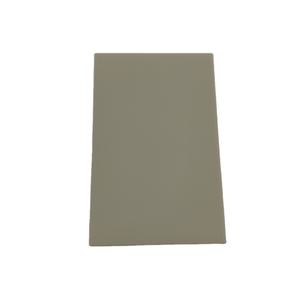
(TO-220 TO-247 170W/m.k Aln Aluminum Nitride Ceramic Board)
REQUEST A QUOTE
RELATED PRODUCTS
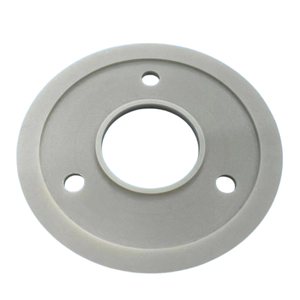
Custom Shape ALN Aluminum Nitride ALN Ceramic Seal Ring
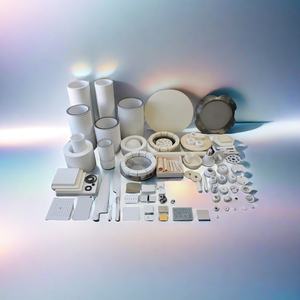
High Purity 99.95% Aluminum Nitride AlN Spherical Powder 3-5um Ceramic Microspheres Durable Heat Conductive Material
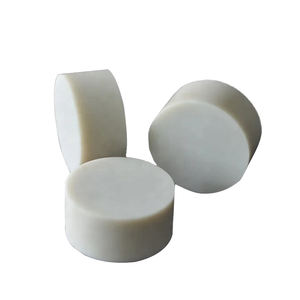
Aluminum Nitride Aln Insulating Ceramic for Melting
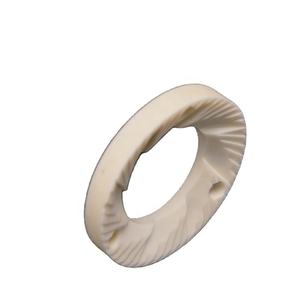
Material Properties Aluminum Nitride Structure Tubes / Tubing
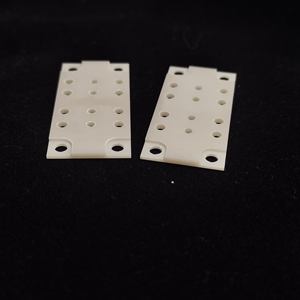
High Thermal Conductivity Aluminum Nitride Ceramic Wafer for Heat Sink
